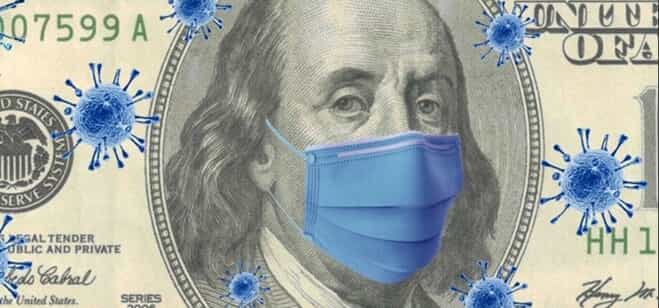The Families First Coronavirus Response Act (“FFCRA”) was recently updated by the U.S. House, voted on by the U.S. Senate, and signed into law by the president. It will take effect April 1, 2020. The FFCRA provides for both emergency paid sick leave and an expansion of FMLA leave to employees who work for employers with fewer than 500 employees.
Employers will receive a refundable tax credit against their share of Social Security taxes for qualified paid sick leave wages or FMLA paid for each calendar quarter to be paid under the above laws.
Paid Sick Leave
The final version of the FFCRA updates the Emergency Paid Sick Leave Act so that employees are now eligible for paid sick leave regardless of how long they have been employed. The leave can be taken for two weeks (80 hours) for full-time employees and for the average number of hours a part-time employee would work over a typical two-week period. Paid sick leave is now available to employees who meet one of the following criteria:
- The employee is subject to a federal, state, or local quarantine or isolation order related to COVID-19;
- The employee has been advised by a health care provider to self-quarantine due to concerns related to COVID-19;
- The employee is experiencing symptoms of COVID-19 and seeking medical diagnosis;
- The employee is caring for an individual who is subject to a federal, state, or local quarantine order, or the individual has been advised to self-quarantine due to concerns related to COVID-19;
- The employee is caring for the employee’s son or daughter, if the child’s school or childcare facility has been closed, or the child’s care provider is unavailable due to COVID-19 precautions; or
- The employee is experiencing any other substantially similar condition specified by Health and Human Services in consultation with the Department of the Treasury and the Department of Labor.
Employees who take emergency sick leave relating to their own condition (as described in 1–3 above) receive pay calculated based on the employee’s regular rate of pay or local minimum wage—whichever is greater—but capped at $511 per day and $5,110 total.
Employees who take emergency sick leave because they are acting as a caregiver (as described in 4–6 above) receive pay based on two-thirds of the employee’s regular rate of pay or local minimum wage—whichever is greater—but capped at $200 per day and $2,000 total.
Employers are prohibited from requiring employees to use other paid leave provided by the employer before using the new paid sick time, and an employer may not require an employee to find a replacement when using this paid sick time. Employers cannot discriminate or retaliate against an employee for taking paid sick leave under the new law or for reporting complaints, testifying, or instituting proceedings related to the law.
There is no carry-over of unused hours into subsequent years or payout upon termination. The employee must return to work as soon as the need for leave ends. The paid sick leave provisions will be in effect through December 31, 2020.
A violation of this portion of the law constitutes a minimum wage violation under the Fair Labor Standards Act. The penalties include lost wages, an equivalent amount as liquidated damages, and attorney’s fees and costs. Intentional violations may result in up to a $10,000 fine and, for repeat offenders, up to six months in prison after a prior conviction.
FMLA Leave
The final FFCRA has also amended the Family and Medical Leave Act (“FMLA”). Employers must now provide employees who have been on the job for at least 30 days with emergency FMLA leave if the employee is “unable to work (or telework) due to a need for leave to care for the son or daughter under 18 years of age of such employee if the school or place of care has been closed, or the child care provider of such son or daughter is unavailable, due to a public health emergency.”
While the FMLA typically permits 12 weeks of unpaid leave, the FFCRA creates a new FMLA scheme in which employees are eligible for 10 days of unpaid leave, followed by 10 weeks of paid leave. During the initial 10 days, employees are able, however, to substitute accrued vacation, personal leave, or medical or sick leave to receive pay for those days.
For the following 10 weeks, employers must provide paid leave, calculated at no less than two-thirds an employee’s regular rate of pay, and based on the typical number of hours the employee would normally work. This FMLA pay may not exceed $200 per day or $10,000 total. Certain employers with fewer than 25 employees may now be exempt from penalties for violations of the FMLA expansion.
Employees who work under a multi-employer collective agreement and whose employers pay into a multi-employer plan are eligible for the same benefits.
COVID-19 Testing
The Act also provides for free COVID-19 testing. Group health plans and health insurance issuers offering group or individual health insurance coverage must provide coverage for testing without any cost-sharing requirements or prior authorization or other medical management requirements.
As always, reach out to an employment attorney if you have questions about how the new FFCRA affects your business or your employment.
Read our earlier coverage of the House bill here.

